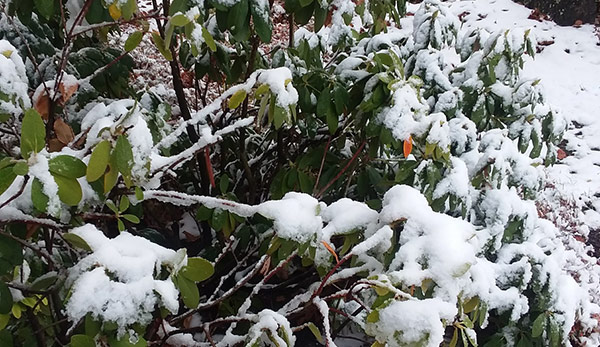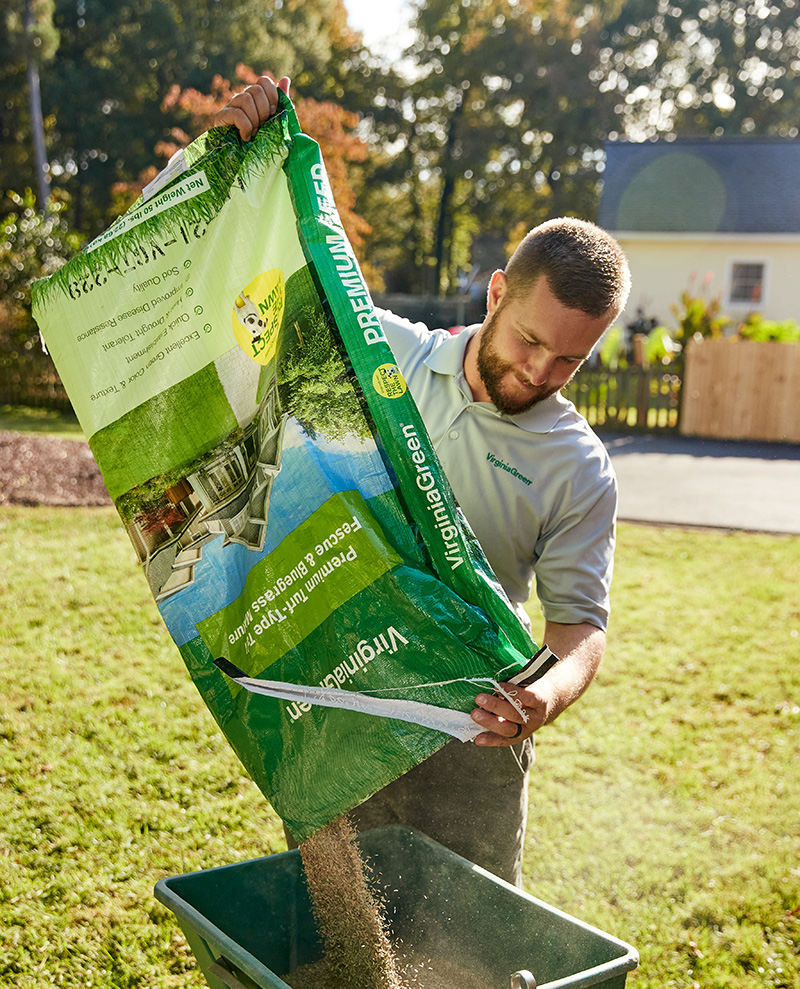Virginia Green Grow Beyond Blog
Respect the Lawn
Our Blogs
Snow on Your Trees and Shrubs
Should you worry about heavy snow on trees and shrubs?
After a heavy snowfall, have you ever thought about removing heavy snow from the branches of your trees and shrubs? There are two thoughts about this question. We will discuss both of them here.

What Are These Small Green Worms In My Trees?
How Do I Manage Sedge Weeds in My Flower Beds?
Sedge can be a nuisance in the lawn but can be equally if not more frustrating when populating your flower beds. It is very unsightly when your carefully planted annual and perennials are invaded by this tall grass like weed.
What Happens to Your Lawn in Winter?
What’s the Best Grass Seed For My Lawn?

A great lawn begins with great seed. Selecting the best type of grass seed for fall aeration and seeding requires understanding several factors.
What are Ladybugs Doing in My House!
Why Are Ladybugs In My House During the Winter?
Ladybugs tend to seek warmth to hibernate during the cold winter months, entering your house through small cracks along windowsills, doorways, and under clapboards. Ladybugs gather in groups when they hibernate, so if you don’t repair/seal their entranceways, you are more than likely going to see more. They prefer humidity, but homes are usually dry during the winter so if you’ve ever found a dried-up ladybug, it’s because of dehydration.
Lawn Programs
Premium Lawn Care Service
Our most popular lawn care service is Premium Lawn Care. It includes seven essential treatments per year to keep your lawn green, vibrant, and weed-free.
7 Applications per Year
- Pre-emergent crabgrass control
- Broadleaf weed control
- Nutsedge control
- Starter lawn fertilizer for seedling germination and development
- Liquid and granular lawn fertilizer applications
Estate Lawn Care Service
For homeowners seeking exceptional lawn care services, our Estate Lawn Care Service offers the ultimate in care and customization. This comprehensive program includes advanced treatments.
11 Applications per Year
- Pre-emergent crabgrass control
- Broadleaf weed control
- 2 applications of nutsedge control
- Starter lawn fertilizer for seedling germination and development
- Liquid and granular lawn fertilizer applications
- 4 applications of lawn disease prevention fungicides
- Lime Application
- Grub Control
- Annual soil samplings and results


